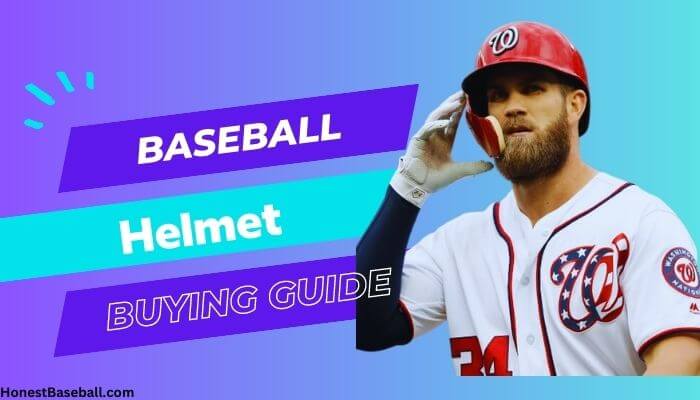One of the most important pieces of equipment for any baseball player is the helmet. Whether you’re a seasoned professional or just starting out a properly fitting and well-designed helmet can make all the difference in keeping you safe on the field.
But with so many different types of helmets available, how do you know which one to choose? Therefore, I created this baseball buying guide to assist you in finding the best helmet for your needs.
From sizing considerations to safety features and durability, I’ll cover it all in this comprehensive guide. So grab your bat and let’s dive into the world of baseball helmets!
Types of Baseball Helmets
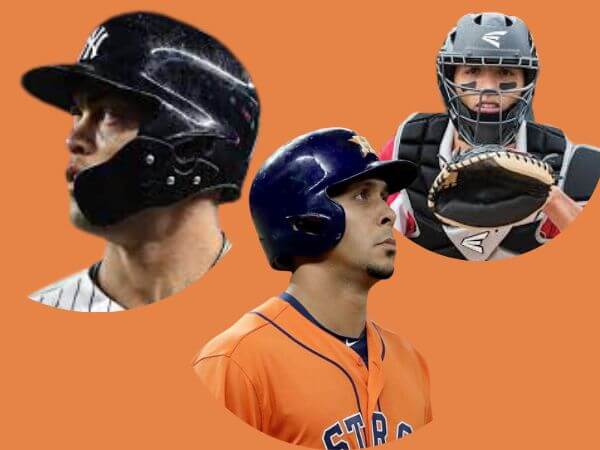
Traditional Baseball Helmet
This is the most commonly seen helmet on baseball fields. It’s designed to provide protection to the top and sides of the head. Made from durable materials like ABS plastic or composites, this helmet offers reliable defense against potential impacts. Infielders, outfielders, and batters typically wear this type of helmet.
Batting Helmet
If you’ve ever watched a baseball game, you’ve likely seen batters wearing a unique helmet. Known as the batting helmet, it offers additional protection for the face and ears.
Equipped with extended ear flaps and a faceguard, which can be in the form of a wire cage or a clear plastic shield, this helmet ensures the batter’s safety during at-bats. It serves as a shield against wild pitches, potential injuries from foul balls, and even mishaps during swings.
Catcher’s Helmet
Catchers wear a specialized helmet that provides comprehensive protection for their head, face, and throat. The catcher’s helmet is built with a hard shell and features extended and reinforced ear protection. To guard against potential impacts from balls, foul tips, and collisions at home plate, it is equipped with a sturdy metal or plastic faceguard that covers the entire face, including the throat area.
So whether you’re playing as a batter or catcher, there’s a helmet out there designed just for your needs!
Features and Design Elements of Various Helmet Styles.
Traditional baseball helmets have a classic look and feel, with a hard plastic shell that covers the top and back of the head. They typically feature ear flaps for added protection to the sides of the head.`
Batting helmets often have a more streamlined design than traditional helmets. They are designed to fit snugly on top of the head without covering the ears or neck. Batting helmets may also include ventilation holes for increased breathability during long games or practices.
Catcher’s masks provide some of the most comprehensive helmet protection available in baseball. These masks feature a full-face guard made from sturdy metal bars that protect against impacts from all directions.
In addition to these basic styles, there are many other helmet options available that offer additional customization or specialized features based on individual player needs.
Find the Proper Size
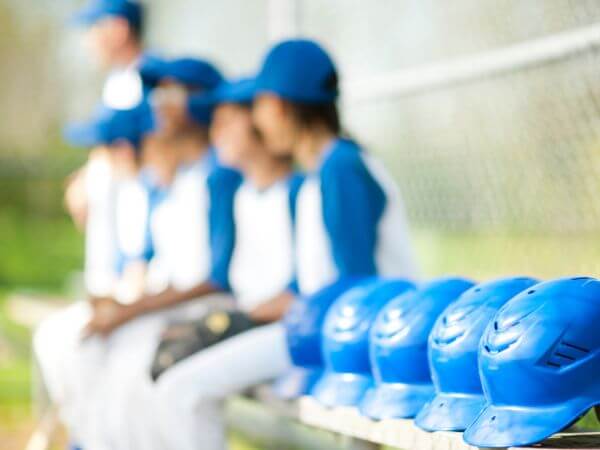
Wearing an ill-fitting helmet can leave players susceptible to serious head injuries. When choosing a baseball helmet, it’s important to consider several factors that affect sizing.
Firstly, you’ll need to measure your head circumference to determine the appropriate size of the helmet. To do this, take a flexible measuring tape and wrap it around the widest part of your head (above your eyebrows and ears).
You must get an accurate measurement as wearing a too-tight or loose helmet can increase the likelihood of injury. A well-fitted helmet should feel snug but not uncomfortable.
When trying on helmets, make sure they sit level on your head and cover both temples entirely. If the back rim sits above your hairline or neck, it’s too small; if it falls below either one, it’s too big.
Here are more details
Baseball Helmet Size Chart
| Hat Size | Circumference (in) | Circumference (cm) |
| 8 | 25 | 65 |
| 7 7/8 | 24 3/4 | 64 |
| 7 3/4 | 24 3/8 | 63 |
| 7 5/8 | 24 | 62 |
| 7 1/2 | 23 5/8 | 61 |
| 7 3/8 | 23 1/8 | 60 |
| 7 1/4 | 22 3/4 | 59 |
| 7 1/8 | 22 3/8 | 58 |
| 7 | 22 | 57 |
| 6 7/8 | 21 5/8 | 56 |
| 6 3/4 | 21 1/4 | 55 |
| 6 5/8 | 20 3/4 | 54 |
| 6 1/2 | 20 3/8 | 53 |
| 6 3/8 | 20 | 52 |
| 6 1/4 | 19 5/8 | 51 |
| 6 1/8 | 19 1/4 | 50 |
| 6 | 18 3/4 | 49 |
Considerations for Choosing the Right Size
A poorly fitting helmet can increase the risk of injury and affect your overall performance on the field. To find the proper size, you will need to measure your head circumference accurately.
To do this, use a soft tape measure and wrap it around your head just above your eyebrows and ears. Make sure that it’s snug but not too tight, as you don’t want to compress any parts of your skull or create pressure points.
Once you have measured your head circumference, compare it with the manufacturer’s sizing chart for each brand and model of helmet you are considering. It’s essential to choose a helmet that fits comfortably without being too loose or too tight.
A comfortable fit means less movement during play, which translates into better protection against impacts from balls or bats. Furthermore, some helmets come with adjustable padding or straps that allow for a customized fit.
Always remember to consider different brands’ sizing charts when choosing a suitable option for yourself.
Step-by-step Guide on Measuring Head Circumference
To measure your head circumference, you will need a soft tape measure or string. Start by wrapping the tape measure around the widest part of your forehead, just above your eyebrows, and around to the back of your head where it meets the base of your skull.
Make sure to keep the tape level and snug but not too tight as this can result in an incorrect measurement. If using a string, mark where it overlaps with itself before laying it flat against a ruler or standard measuring tape.
Once you have obtained this measurement in inches or centimeters, consult with sizing charts provided by manufacturers to determine which size helmet best matches your measurements.
Different brands may have slightly different sizing standards so don’t assume that one brand’s small will fit you just like another brand’s small would. Always refer to individual sizing charts for accurate results when shopping for helmets online or in-store.
Safety Features of Baseball Helmets
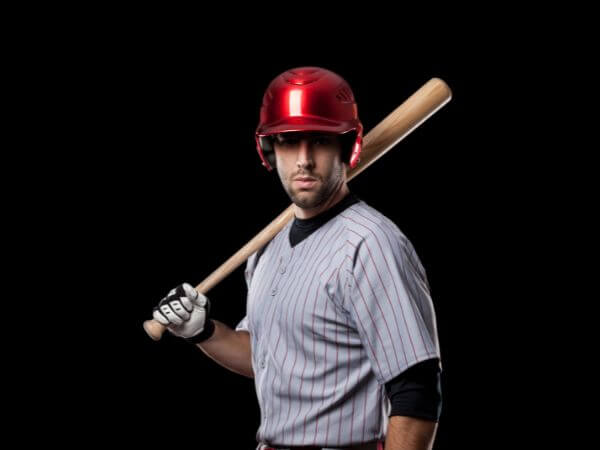
Safety should be your top priority. Investing in a high-quality helmet with the right features can help protect you from serious head injuries.
One of the most important safety features to consider is impact resistance. Look for helmets that have been certified by organizations such as NOCSAE (National Operating Committee on Standards for Athletic Equipment) and ASTM International, which test helmets for their ability to withstand impacts.
Here are some other safety features you should take care of:
Key Features that Contribute to Safety and Performance
The key features that contribute to safety and performance include impact resistance, ventilation, and padding.
Impact resistance is crucial in protecting a player’s head from potential injuries. Helmets with high-impact resistance are made of durable materials such as ABS plastic or composite materials. These materials can withstand strong impacts without cracking or breaking.
Ventilation plays an important role in keeping players cool and comfortable during long games. Good ventilation allows air to circulate through the helmet, preventing sweat buildup and reducing heat exhaustion.
Padding provides additional protection by absorbing shock from impacts. Helmets with thick padding distribute force evenly across the head, minimizing the risk of serious injury.
Use Faceguards
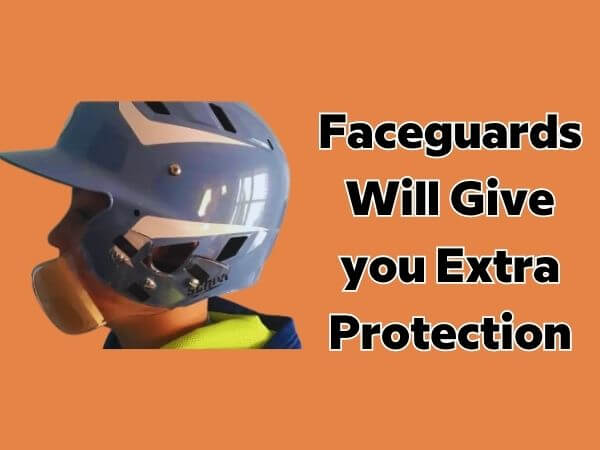
A faceguard protects your entire face from errant balls and flying debris. It’s not just your nose and mouth that are vulnerable on the baseball field – a high-speed ball can do serious damage to your eyes as well. By wearing a faceguard, you’re giving yourself an extra layer of protection against injury.
A recent study showed that faceguards can reduce the risk of concussion by 50%. That’s an incredible number, and you should not ignore it. If you’re serious about preventing concussions, then you need to be using a faceguard on your baseball helmet.
There are a variety of faceguards available on the market, so you can find one that fits your needs and budget. Some baseball helmet comes with a built-in face guard.
But regardless of which one you choose, make sure that you’re using a faceguard on your baseball helmet from now on. It could be the difference between staying healthy and suffering a serious injury.
You should also ensure that their chosen helmet with a faceguard fits properly and does not obstruct their vision or breathing. You can accomplish that by trying on different sizes and adjusting straps accordingly
A faceguard can also help deflect the sun away from your eyes, making it easier to see the ball when it’s coming at you. This is especially important for pitchers and catchers, who often have to look directly into the sun when they’re on the mound or behind the plate.
Innovative Technologies or Advancements in Helmet Design.
Recent advancements in helmet design have led to significant improvements in safety and comfort for baseball players.
Composite materials are a huge invention, which offers superior impact protection while also reducing weight.
Another technological advancement that has gained popularity among players is the integration of moisture-wicking fabrics into helmet liners. This feature helps keep athletes cool and dry during hot summer games, preventing heat exhaustion or discomfort.
In addition to these features, some helmets now come equipped with advanced ventilation systems designed to increase airflow and reduce overall weight. These innovations allow baseball players to remain focused on their game and perform at their best without worrying about overheating or uncomfortable gear.
Faceguards are another important aspect of modern helmet design. Some models come with built-in faceguards made from durable materials like polycarbonate, offering enhanced protection against fast-moving pitches and throw.
As technology continues to evolve, we can expect even more innovative features and designs incorporated into baseball helmets in the future. These developments will undoubtedly improve player performance while keeping them safe from potential injuries on the field.
Helmet Materials and Durability
ABS Plastic: Affordable and Reliable
Helmets made from ABS (Acrylonitrile Butadiene Styrene) plastic are a popular choice for many players, including recreational and budget-conscious athletes.
ABS plastic offers good durability and impact resistance, providing reliable protection. This type of helmet is commonly used in baseball and softball, catering to players of all skill levels. With its affordable price point, ABS plastic helmets are a practical choice for players who don’t want to compromise safety while considering their budget.
Composite Materials: Strength and Lightness for Advanced Players
For professional baseball and softball players, helmets made from composite materials, such as carbon fiber, Kevlar, and fiberglass, are best suited.
These materials offer a combination of strength and lightness, providing excellent impact resistance and durability. Although composite helmets tend to be more expensive, they are highly regarded for their performance and are ideal for players who prioritize top-tier protection and are willing to invest in high-quality gear.
Polycarbonate: Balanced Protection for Players at All Levels
Polycarbonate helmets strike a balance between strength and weight, making them suitable for players at various levels, including youth and amateur athletes.
This durable plastic material provides reliable protection and can withstand impacts effectively. Polycarbonate helmets are available at different price points, offering players a range of options to fit their budget while ensuring solid head protection.
In addition to shell material, many helmets feature foam padding on the inside for added comfort and shock absorption. Some brands also incorporate ventilation systems into their designs to help keep players cool during hot games.
When choosing a baseball helmet, consider your level of play and budget as well as any special features you may need such as additional faceguard protection or custom sizing options.
How to Maintain Baseball Helmets for Prolonged Use

Maintaining your baseball helmet is crucial to ensure its longevity and continued protection for the player. Here are some tips on how to properly maintain your helmet:
First, it’s important to clean the helmet after every use. Use a damp cloth and mild soap solution to wipe down the exterior of the helmet, removing any dirt or debris that may have accumulated during play.
Next, inspect the interior padding regularly for signs of wear and tear. If you notice any damage or fraying in the padding, replace it immediately as it can compromise the effectiveness of the helmet.
Store your helmet properly when not in use. Avoid storing it in direct sunlight or extreme temperatures as this can cause damage over time.
Check all hardware such as straps and buckles regularly for signs of wear or damage. Replace any damaged parts immediately as they are essential components in keeping your helmet secure during play.
Popular Brands and Models of Baseball Helmets
The brand and model you choose can make a big difference in terms of quality, safety, and comfort. Some popular brands of baseball helmets include the following
Rawlings: Trusted Protection and Performance
Rawlings is a renowned brand known for producing high-quality baseball helmets that offer trusted protection and performance. With a focus on player safety, Rawlings helmets incorporate innovative technologies and advanced designs to ensure maximum head protection.
Easton: Cutting-Edge Design and Comfort
Easton is a popular brand that combines cutting-edge design with exceptional comfort. Their helmets feature advanced ventilation systems and moisture-wicking liners, keeping players cool and dry during intense games. Easton helmets are favored by many players for their comfort and modern aesthetics.
Under Armour: Enhanced Fit and Customization
Under Armour helmets stand out for their enhanced fit and customization options. With adjustable straps and padding, Under Armour offers a personalized fit tailored to individual preferences. Their helmets are known for their superior comfort and ability to adapt to different head shapes and sizes.
Wilson: Classic Style and Durability
Wilson is a well-respected brand known for its classic style and durable construction. Wilson helmets are built to last, providing reliable protection game after game. With a focus on traditional aesthetics, Wilson offers helmets that combine timeless style with modern safety features.
Mizuno: Lightweight Performance and Protection
Mizuno helmets are recognized for their lightweight performance and exceptional protection. These helmets prioritize player comfort without compromising on safety. Mizuno utilizes advanced materials and technology to create helmets that are both highly protective and comfortable to wear.
DeMarini: Sleek Design and Advanced Features
DeMarini helmets are known for their sleek design and advanced features. These helmets combine style and functionality, offering players a modern and streamlined look on the field. DeMarini incorporates cutting-edge technologies to provide optimal protection and performance.
Louisville Slugger: Innovative Technology and Performance
Louisville Slugger helmets are synonymous with innovative technology and high-performance gear. Their helmets feature advanced materials and design elements to deliver exceptional protection and comfort. Louisville Slugger helmets are preferred by players who seek top-of-the-line gear that enhances their performance.
Champro Sports: Budget-Friendly Options
Champro Sports offers a range of budget-friendly baseball helmets without compromising on safety. They provide reliable protection at an affordable price, making them a popular choice for players on a budget or in recreational leagues.
What to Look for When Buying a Helmet
Safety and Protection
To keep yourself safe while playing, make sure the helmet meets safety standards and certifications like NOCSAE approval. Look for helmets that provide adequate coverage and protection for your head, including the temple and back of the skull. Additional safety features like impact-absorbing padding and a strong shell can provide extra protection.
Fit and Comfort
The helmet should fit you properly to ensure both comfort and safety. It shouldn’t be too tight or too loose. A well-fitting helmet should securely sit on your head without wobbling. A snug fit ensures that the helmet stays in place during play and doesn’t obstruct your vision or movement.
Size and Adjustability
Consider the size of the helmet and choose one that matches your head circumference. Most helmets come in different sizes, so check the manufacturer’s size chart to find the right fit. Opt for helmets with adjustable straps and padding to customize the fit for added comfort.
Ventilation and Breathability
Look for helmets with proper ventilation to keep you cool during games or practices. Ventilation helps prevent overheating and discomfort. Helmets with moisture-wicking liners or breathable materials can also enhance breathability, keeping you feeling fresh throughout your play.
Style and Personal Preference
While safety and fit are crucial, it’s also important to choose a helmet that matches your style and personal preference. Many brands offer a variety of colors and designs to suit different tastes. Find a helmet that you feel confident wearing, reflecting your personality and style.
Price Range of Baseball Helmets
The price range of baseball helmets can vary greatly depending on the type, brand, and features. Traditional helmets typically range from $20 to $100, while batting helmets can range from $30 to over $200. Catcher’s helmets tend to be more expensive due to their added protection and can cost anywhere from $50 up to $300.
When it comes to price, it’s important not to sacrifice safety for affordability. Cheaper helmets may lack crucial safety features such as impact resistance or proper ventilation.
On the other hand, a high-priced helmet doesn’t necessarily guarantee superior protection. You should do research and look for reviews before making a purchase.
A good way to save money when buying a baseball helmet is by considering last season’s models or discontinued styles. These helmets may still offer adequate protection but at a lower cost.
Check my list of the best baseball helmets at affordable prices
FAQs About Baseball Helmets
What is the difference between a traditional baseball helmet and a batting helmet?
Traditional helmets are worn by fielders while batting helmets have a faceguard to protect the batter’s face from errant pitches.
Can I adjust the fit of a helmet?
Many helmets offer adjustable features such as straps and padding. These allow you to customize the fit for optimal comfort and security. Follow the manufacturer’s instructions to properly adjust these features to ensure a snug and secure fit.
Can catcher’s helmets be used for other positions?
Catcher’s helmets tend to offer more protection due to their extended coverage. However, they may not be practical for other positions because of their weight and bulkiness.
Do all baseball leagues require players to wear helmets?
Yes, it is mandatory in all levels of organized baseball – from Little League to Major League Baseball (MLB).
How do I know if a helmet is well-ventilated?
Well-ventilated helmets typically feature vents or perforations that allow airflow. Look for helmets with strategically placed vents that promote air circulation. Additionally, helmets with moisture-wicking liners or breathable materials can help enhance ventilation and keep you cool during play.
Can I use a helmet for both baseball and softball?
There are various helmets out there that may be used for both baseball and softball. Make sure the helmet you buy satisfies the safety standards for the sport you plan on participating in, though.
How often should I replace my baseball helmet?
If you get a major blow on the helmet, you should consider getting a new one. Otherwise, a helmet is good for use up to two years. But after two years you should change your helmet for safety reasons.
Are more expensive helmets always better than cheaper ones?
Not necessarily. The price tag does not always reflect the quality or level of protection offered by a particular model. It’s essential to carefully consider features like impact resistance and fit when selecting a helmet.
Conclusion
So, did you get a clear idea about baseball helmets?
I hope that this buying guide has helped you figure out which baseball helmet is right for you. Whether you’re a professional or casual player, there’s no denying the importance of having the proper headgear to protect your most valuable asset. Investing in a quality helmet can make all the difference when it comes to protecting yourself on the field and keeping safe while enjoying America’s favorite pastime.
So go ahead and find yourself one that fits well and provides great protection so you can focus on what matters most—playing baseball!

Hello everyone. My name is Jason Butler, and I live in California, America. I was a professional AAA Minor League Baseball player. I lost my chance of playing MLB for injury issues, but I did not lose my love for baseball. I attended the coaching training program and am now working as a coach in a small school in San Diego.
I always love to share my experience and knowledge if that can help you. Play baseball, and stay fit.
